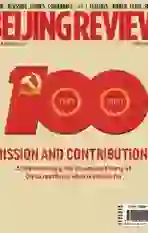How Should the U.S.View the Communist Party of China?
2021-09-05ByJamesPeck
By James Peck

The astonishing transformation of China—its economic prowess, its rapid urbanization without slum cities, its scientific and technological prowess, the education of its vast population, its modern infrastructure which is the envy of much of the world, and its continually evolving pattern of governance that has enabled all these developments—has of course all occurred under the leadership of the Communist Party of China (CPC).
The unprecedented accomplishments that China incessantly rolled out all required the vision, skill, staying power, and constant transformation of the CPC itself. They demanded the continual summing up of its experiences, and what polls suggest is popular support for the CPCs leadership—little of this can be viewed objectively or approached with an open mind in the U.S.
Obligatory objectivity
Part of the problem, even among those open to a more accurate and sensitive understanding of China, lies in how the CPC is like no other political party in the world—and that its accomplishments are a reflection of this. As the Austrian philosopher Ludwig Wittgenstein once said, the“limits of our language are the limits of our world.” Washington well understands that who rules the words often fashions what is seen and how it is judged. The critical need for the effort to find different concepts, frameworks and keywords, in China and elsewhere, to challenge those often limiting and imprisoning theories and words reflective of Western centrism, remains to this day.
Their absence in discussions in the U.S. often precludes any understanding of why the CPC became a central feature in the solution to Chinas problems instead of standing in their way; why China has not adopted Western systems of governance, but sought its own; why and how the CPC evolved its developing patterns of governance out of a distinctive set of historical, revolutionary, and core aspects of Chinese civilization. And more: How the CPC has sustained national unity and stability today that enables a rapidity of prolonged change like no other nation has ever undergone.
All this contributes to making it difficult for Americans to understand what China hands John Service, Edgar Snow and several of their peers already knew in their bones—namely how and why the CPC had come to embody the historic mission to lead China from some of its darkest days into a radically transformed, modern, socially more just society. There was no model and no blueprint for doing this. But thats another way of underlining just how, for over a century, amid a constantly changing and threatening environment, the CPC found ways often through tumultuous struggles to remain a dynamic, experimenting, often highly pragmatic party capable of transforming itself while remaining true to its central vision in the most diverse of circumstances.
